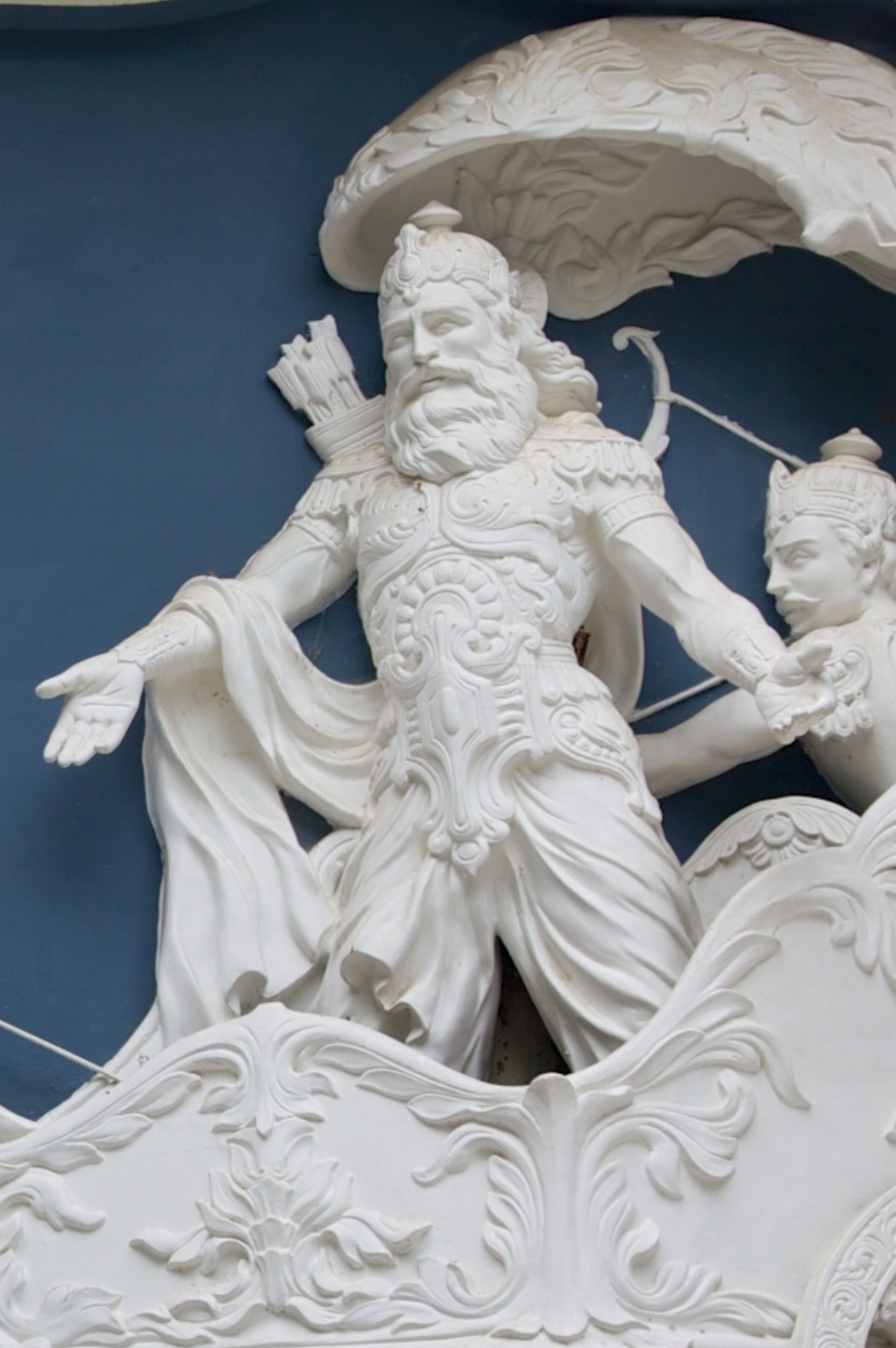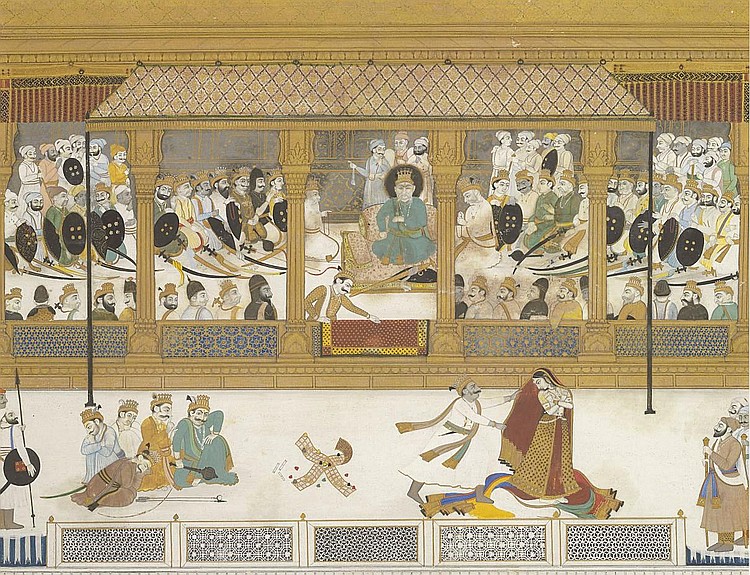|
Kamatha Kamboja
Kamatha is a Kamboja king mentioned in the Mahābhārata as one of the principal Kshatriyas taking part in the battle. References See also *Srindra Varmana Kamboj *Chandravarma *Sudakshina Sudakshina () is a king of the Kamboja (caste) featured in the Hindu epic Mahabharata. Legend On the 14th day of the Kurukshetra War, Arjuna, with his charioteer Krishna, attempts to reach Jayadratha. Drona and Duryodhana arrange warriors in ... Characters in the Mahabharata Kambojas {{Asia-royal-stub ... [...More Info...] [...Related Items...] OR: [Wikipedia] [Google] [Baidu] |
Kambojas
The Kambojas were a southeastern Iranian peoples, Iranian people who inhabited the northeastern most part of the territory populated by Iranian tribes, which bordered the Indian subcontinent, Indian lands. They only appear in Indo-Aryan languages, Indo-Aryan inscriptions and literature, being first attested during the later part of the Vedic period. They spoke a language similar to Younger Avestan, whose words are considered to have been incorporated in the Aramao-Iranian version of the Kandahar Bilingual Rock Inscription erected by the Maurya Empire, Maurya emperor Ashoka (). They were adherents of Zoroastrianism, as demonstrated by their beliefs that insects, snakes, worms, frogs, and other small animals had to be killed, a practice mentioned in the Avestan Vendidad. Etymology ''Kamboja-'' (later form ''Kāmboja-'') was the name of their territory and identical to the Old Iranian name of ''*Kambauǰa-'', whose meaning is uncertain. A long-standing theory is the one propose ... [...More Info...] [...Related Items...] OR: [Wikipedia] [Google] [Baidu] |
Mahābhārata
The ''Mahābhārata'' ( ; , , ) is one of the two major Sanskrit epics of ancient India revered as Smriti texts in Hinduism, the other being the '' Rāmāyaṇa''. It narrates the events and aftermath of the Kurukshetra War, a war of succession between two groups of princely cousins, the Kauravas and the Pāṇḍavas. It also contains philosophical and devotional material, such as a discussion of the four "goals of life" or '' puruṣārtha'' (12.161). Among the principal works and stories in the ''Mahābhārata'' are the ''Bhagavad Gita'', the story of Damayanti, the story of Shakuntala, the story of Pururava and Urvashi, the story of Savitri and Satyavan, the story of Kacha and Devayani, the story of Rishyasringa and an abbreviated version of the ''Rāmāyaṇa'', often considered as works in their own right. Traditionally, the authorship of the ''Mahābhārata'' is attributed to Vyāsa. There have been many attempts to unravel its historical growth and comp ... [...More Info...] [...Related Items...] OR: [Wikipedia] [Google] [Baidu] |
Kshatriya
Kshatriya () (from Sanskrit ''kṣatra'', "rule, authority"; also called Rajanya) is one of the four varnas (social orders) of Hindu society and is associated with the warrior aristocracy. The Sanskrit term ''kṣatriyaḥ'' is used in the context of later Vedic society wherein members were organised into four classes: ''brahmin'', kshatriya, '' vaishya,'' and '' shudra''. History Early Rigvedic tribal monarchy The administrative machinery in Vedic India was headed by a tribal king called a Rajan whose position may or may not have been hereditary. The king may have been elected in a tribal assembly (called a Samiti), which included women. The Rajan protected the tribe and cattle; was assisted by a priest; and did not maintain a standing army, though in the later period the rulership appears to have risen as a social class. The concept of the fourfold varna system is not yet recorded. Later Vedic period The hymn '' Purusha Sukta'' in the ''Rigveda'' describes the symbolic crea ... [...More Info...] [...Related Items...] OR: [Wikipedia] [Google] [Baidu] |
Srindra Varmana Kamboj
Srindra Varmana according to the ''Skanda Purana'' was a king of the Kamboja kingdom.Studies in Skanda Purana, 1978, p 59, A. B. L. Awasthi. He is said to have installed the image of Varahadeva in his capital and made a gold throne for it.Studies in Skanda Purana, 1978, p 1, A. B. L. Awasthi. See also * Chandravarma Kamboja * Kamatha Kamboja *Sudakshina Kamboja Sudakshina () is a king of the Kamboja (caste) featured in the Hindu epic Mahabharata. Legend On the 14th day of the Kurukshetra War, Arjuna, with his charioteer Krishna, attempts to reach Jayadratha. Drona and Duryodhana arrange warriors in ... References Kambojas {{Hindu-myth-stub ... [...More Info...] [...Related Items...] OR: [Wikipedia] [Google] [Baidu] |
Chandravarma
The ''Mahabharata'' is one of the two major Sanskrit epics of ancient India composed by Veda Vyasa. At its heart lies the epic struggle between the Pandavas and the Kauravas. The central characters include the five Pandava brothers—Yudhishthira, Bhima, Arjuna, Nakula, and Sahadeva—along with their wife Draupadi. On the opposing side, the hundred Kaurava brothers are led by the elder brother, Duryodhana. However, the ''Mahabharata'' is richly populated with other notable figures including Krishna, Bhishma, Drona, Karna, Kunti, Dushasana, Kripa, Dhritrashtra, Gandhari (Mahabharata), Gandhari, Shakuni, Ashwatthama, Balarama, Subhadra, Vyasa, Abhimanyu, Pandu, Satyavati and Amba (Mahabharata), Amba. The ''Mahabharata'' manuscripts exist in numerous versions, wherein the specifics and details of major characters and episodes vary, often significantly. Except for the sections containing the ''Bhagavad Gita'' which is remarkably consistent between the numerous manuscripts, the rest ... [...More Info...] [...Related Items...] OR: [Wikipedia] [Google] [Baidu] |
Sudakshina
Sudakshina () is a king of the Kamboja (caste) featured in the Hindu epic Mahabharata. Legend On the 14th day of the Kurukshetra War, Arjuna, with his charioteer Krishna, attempts to reach Jayadratha. Drona and Duryodhana arrange warriors in Arjuna's path, trying to impede his progress until sunset. Sudakshina rallies a fleeing Kaurava akshauhini, challenging Arjuna. He throws a spear at Arjuna; the spear connects and Arjuna swoons in his seat, dripping blood. The Kaurava army begins to cheer, thinking that Arjuna is dead. However, Arjuna quickly recovers and angrily invokes the Indrastra, which multiplies into many arrows and decimates the Kaurava forces. Sudakshina falls to one of these arrows. See also * Srindra Varmana * Chandravarma * Kamatha *Kurukshetra War The Kurukshetra War (), also called the Mahabharata War, is a war described in the Hindu Indian epic poetry, epic poem ''Mahabharata'', arising from a dynastic struggle between two groups of cousins, the Kaur ... [...More Info...] [...Related Items...] OR: [Wikipedia] [Google] [Baidu] |
Characters In The Mahabharata
The '' Mahabharata'' is one of the two major Sanskrit epics of ancient India composed by Veda Vyasa. At its heart lies the epic struggle between the Pandavas and the Kauravas. The central characters include the five Pandava brothers— Yudhishthira, Bhima, Arjuna, Nakula, and Sahadeva—along with their wife Draupadi. On the opposing side, the hundred Kaurava brothers are led by the elder brother, Duryodhana. However, the ''Mahabharata'' is richly populated with other notable figures including Krishna, Bhishma, Drona, Karna, Kunti, Dushasana, Kripa, Dhritrashtra, Gandhari, Shakuni, Ashwatthama, Balarama, Subhadra, Vyasa, Abhimanyu, Pandu, Satyavati and Amba. The ''Mahabharata'' manuscripts exist in numerous versions, wherein the specifics and details of major characters and episodes vary, often significantly. Except for the sections containing the ''Bhagavad Gita'' which is remarkably consistent between the numerous manuscripts, the rest of the epic exists in ... [...More Info...] [...Related Items...] OR: [Wikipedia] [Google] [Baidu] |


